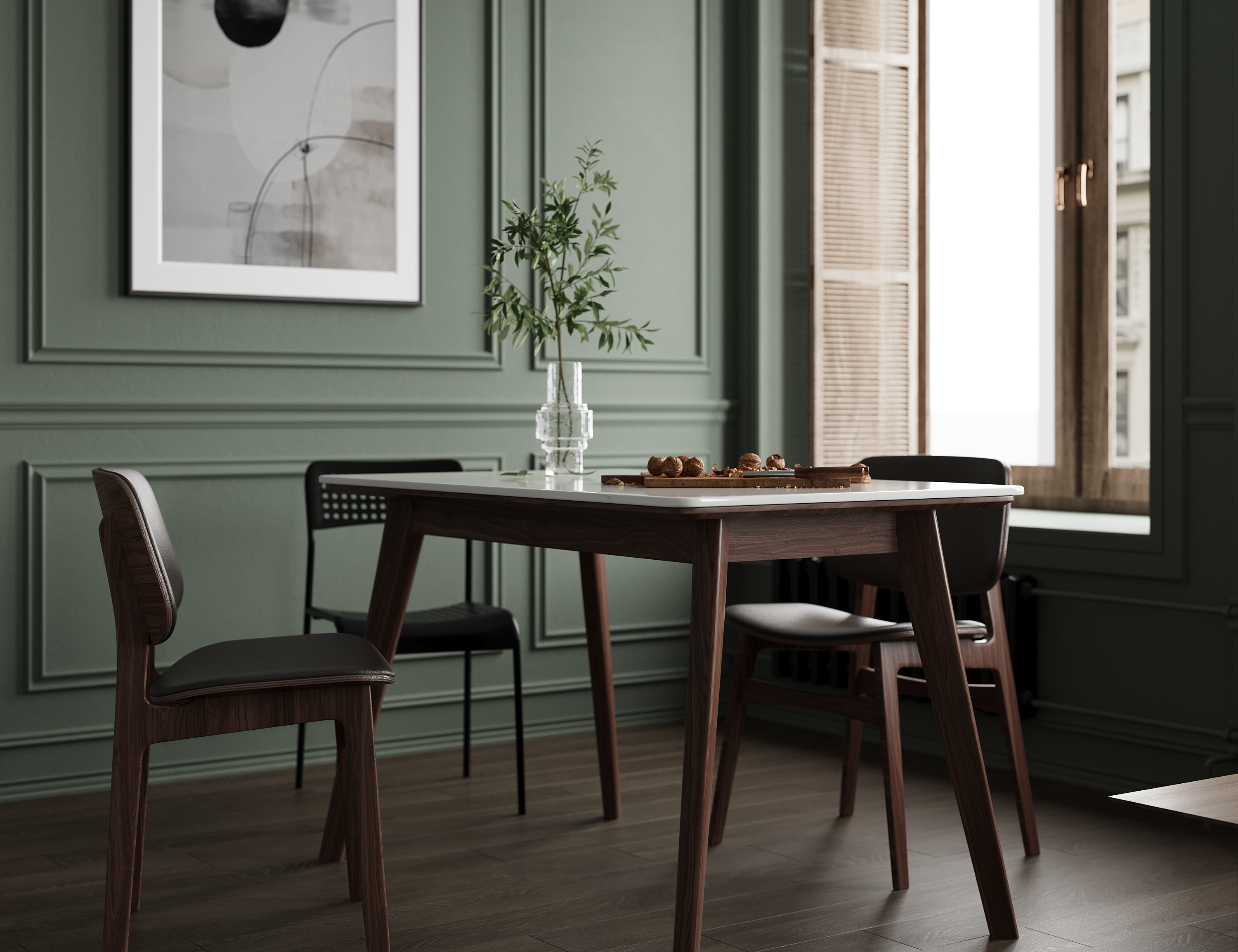
Sleek kitchens with marble countertops and sparkling fixtures. Stylish living rooms outfitted with fine crafted furniture. Companies from Crate & Barrel to IKEA turn to 3D for lifestyle renderings that do more than just showcase their product lines — they captures their brand story in the most scalable fashion.
The styled scenes show products in-context, allowing companies to define the narrative and target specific demographics. Versatile and hyper realistic, 3D lifestyle images are a cost effective way to take customers through your product line, demonstrate details and features and appeal to your target audience by inspiring them through visual storytelling. Plus, people are drawn to visuals — web content with enticing visuals gets 94% more engagement on average.
And the very best in 3D lifestyle rendering have one thing in common: a succinct, informative style guide. Your lifestyle imagery is a reflection of your brand’s values — something you’re an expert on. When you partner with an external 3D content modeling team like Loft3Di, the quality of your results depends on translating your brand information.
Here are three steps to making a style guide that will give your external partner enough information to translate your needs into a scalable creative program.
Do a deep dive on your details
Much of what you’ll need for a 3D lifestyle image style guide likely exists in your brand guidelines. This includes information about tone, audience, and even color schemes. For 3D lifestyle imagery, you’ll want to highlight the visual nitty gritty of your product line.
Information about product structure — think all 360 degrees, like sketches and shop drafts — can convey technical information about the product that 3D artists will use to build accurate representations. Then, think about the tangible aspects of your products. Include product reference photos and close ups or swatches of product materials like wood grains and fabric materials so your modeling team can get a granular view.
If your product has special features tucked away somewhere like on the bottom or back, highlight that information. The benefit of 3D is capturing things that wouldn’t be noticeable in a traditional 2D format. These details will help make sure your products shine in all their real–life glory, and help transport customers.
Include the Dos & the Don’ts! Informing your 3D team of what should not be included is just as important. At Loft3Di, we want to be an extension of your creative team which means we need to understand what your brand does not represent down to the smallest details.
Define your brand style
Is your brand minimalist or glam? Gritty or polished? A style guide is the playbook for crafting realistic representations of your product, and your partners need to know what kind of ambiance your 3D lifestyle imagery should create.
Stylistic elements will help 3D modelers capture the mood you’re trying to achieve. From lighting, to season, to weather, and even purpose, summarizing your brand’s vibe is an important part of ensuring the final effect is in line with your goals and matches your company identity. The process of creating lifestyle imagery at scale is much more efficient if something as central as style is clear from the beginning.
Assemble visual references
So much is possible in 3D lifestyle imagery and sometimes, it’s easier to translate what you’re after through other images.
Take time to browse other companies’ materials to see what they’re doing. As you go, set aside lifestyle imagery that resonates with your brand — the feeling you want to capture, the look you want to achieve, the details you want to highlight — and even examples of things that don’t work. Your 3D modeling team can work with the images you provide to make sure they’re capturing the atmosphere you have in mind.
Shoppers gravitate towards the realism of 3D, and the high degree of detail requires more information and lots of consultation with the brand expert — you. Your feedback is essential to creating the most accurate 3D models possible. Simple, concise instructions and descriptive language can help convey your vision and guide your creative team to execute impressive images that must be seen to be believed.
Don’t Overcorrect
Trying to continually tweak and finesse based on second guessing ill-defined styling does not necessarily result in a better design. In fact, this may cause you to lose the original vision you set to achieve. Instead, create templates that achieve the design objectives of the scenes you set. This may include, but is not limited to: assigning focal point products, standard styling directions related to accessories and lighting, and off-limits “rules” that remove ambiguity with your external 3D design partners.
Learn more about how Loft3Di can help you develop a robust style guide and work with you to scale your lifestyle imagery program by contacting us today.